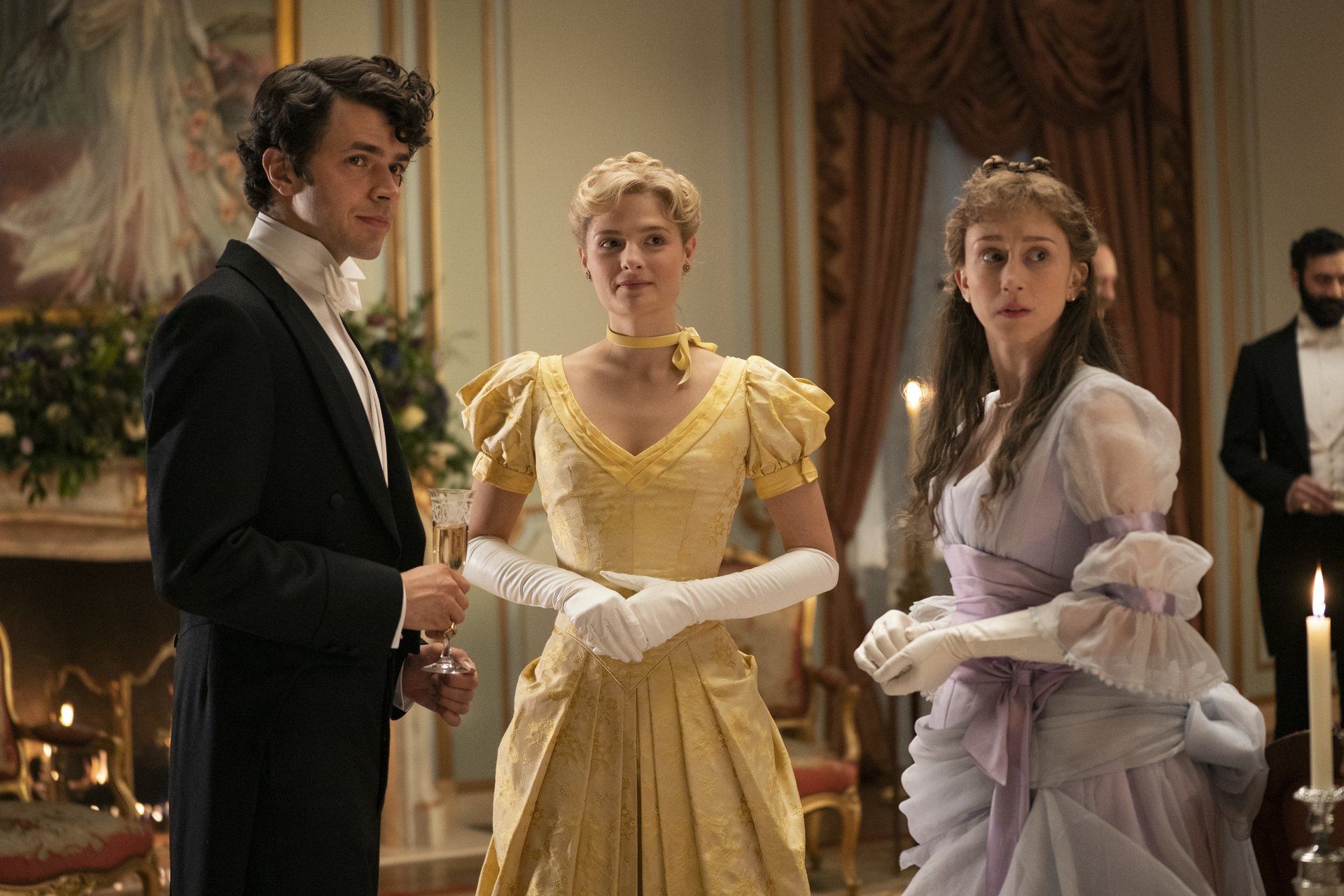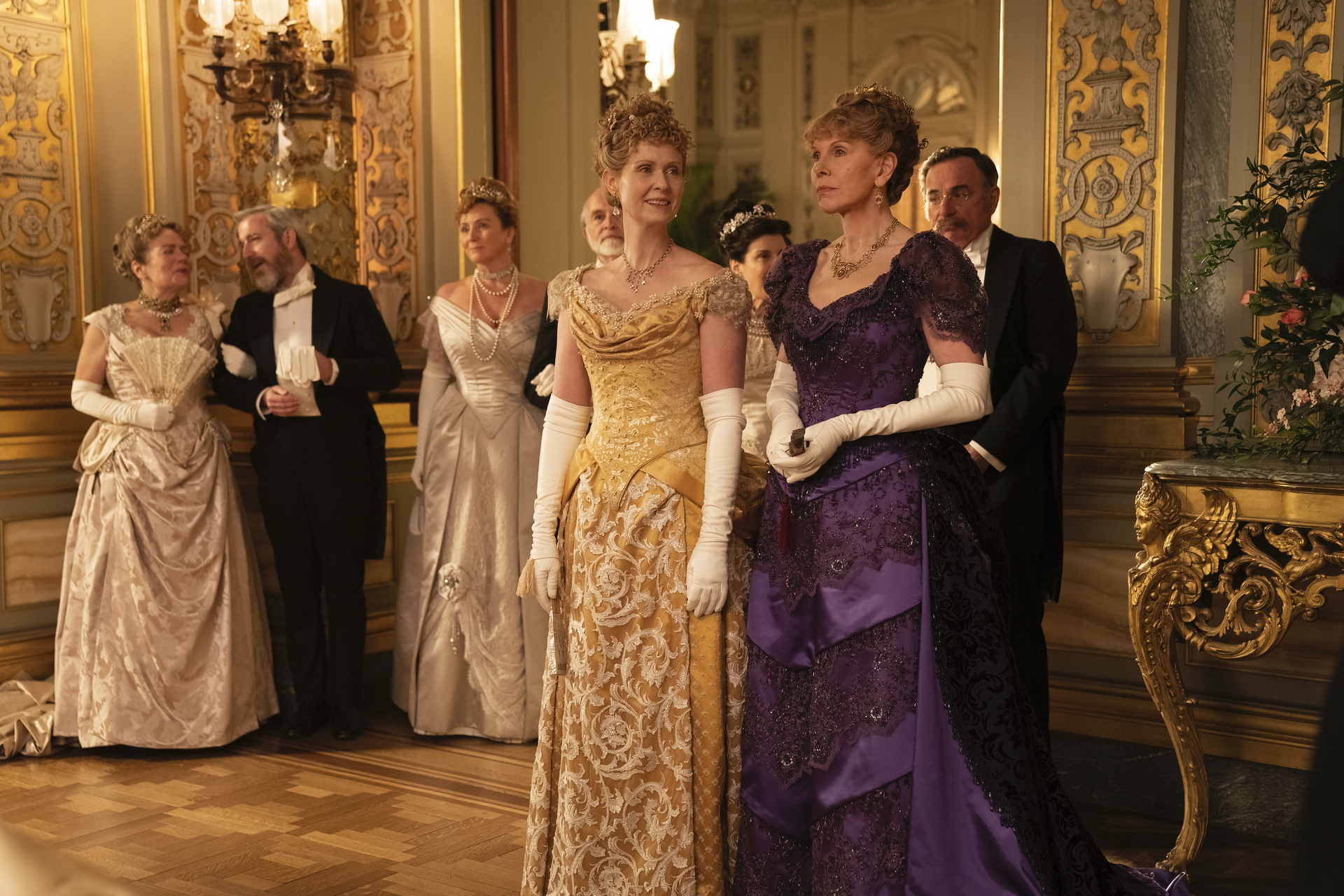Fabulous displays of wealth, high society scandals and power struggles at all levels fuel the opulent drama of HBO’s The Gilded Age, which premiered on Monday. The show, which comes by way of Julian Fellowes, the creator behind the 2001 film Gosford Park and the critically acclaimed historical series Downton Abbey, is a lavish period drama set in the 1880s—an era of rapid growth and change known as the Gilded Age.
The series centers on the introduction of a group of newcomers to New York City’s rigid high society, ranging from wide-eyed country ingénue Marian Brook (Louisa Jacobson), who moves in with her aunts (Christine Baranski and Cynthia Nixon), who belong to one of New York’s oldest and most wealthy families, to the nouveau riche Russell family, headed up by George, a ruthless railroad tycoon patriarch (Morgan Spector) and his even more ambitious wife Bertha (Carrie Coon), who’s determined to climb to the top of the social ladder.

Fellowes, who has made a career of parsing out the tensions that lie between upstairs and downstairs life, honing in on the maladies and melodrama of the ostentatiously wealthy, follows in the legacy of Edith Wharton. The American novelist, known for conjuring stories of high octane drama in the insular world of high society, is one of the foremost authors associated with the Gilded Age. (Fellowes himself has cited Wharton’s works, The House of Mirth and The Custom of the Country as influences on his own work).
For Wharton, who was the first woman to win a Pulitzer in Literature for her 1920 novel, The Age of Innocence, the social mores and hyper specific accounts of luxury and scandal came from first-hand experience. Born Edith Jones to a wealthy, old money family (Wharton’s paternal family is related to the Astor family and are rumored to be the “Joneses” in the idiom, “Keeping up with the Joneses,”), Wharton, like many of her heroines, faced challenges in living life on her own terms as a woman in a society ruled by rigid rules and morals. This, however, provided rich fodder for her as a writer, helping her to create books that were filled with emotion, longing and plenty of drama.
With that in mind, here are five Wharton novels to read to get your Gilded Age fix after watching the new HBO series.

The Age of Innocence
In the Age of Innocence (1920), social mores and familial responsibility keep two star-crossed lovers apart over the course of three decades. Newland Archer, a wealthy lawyer and one of New York’s most eligible bachelors, is set to marry May Welland, an innocent girl from one of society’s top families. However, their soon-to-be marital bliss is disrupted by the arrival of May’s gorgeous and exotic cousin, Countess Ellen Olenska, who has left her cruel husband, who is a Polish count. Inevitably, Newland falls in love with Ellen, leading to a wistful love triangle filled with longing and unfulfilled desire.
Custom of the Country
Neither low social standing or hapless partners can deter Undine Spragg, an ambitious young woman from the Midwest, from climbing New York City’s social ladder in Wharton’s The Custom of the Country (1913). In the novel, Spragg, navigates the rigid rules of high society, learning that her family’s newfound wealth doesn’t quite stack up to an old, blue blood social pedigree. While she cycles through husbands, affairs, Undine soon discovers that an old flame who’s just as ambitious and unconnected as her may be her best match in the end.

The House of Mirth
Wharton’s sharpest critique of how hostile high society could be to a woman, in spite of her social standing or wealth is her 1905 novel, The House of Mirth. Centering on the tragic tale of Lily Bart, a winsome and well-born, but financially struggling young woman who is wrecked by the stringent social mores and cruel slights of New York City’s high society. As Lily grows older and prospects of marriage to a wealthy and well-connected man begin to wane, she survives on wit and the hope of a life with more freedom—but in the end, the world as she knows it grows smaller and smaller, until she runs out of options for a viable future.
Sign up for More to the Story, TIME’s weekly entertainment newsletter, to get the context you need for the pop culture you love.
The Reef
The Reef (1912), centers on a love affair rekindled between Anna Leath, a wealthy widow, and her former flame, George Darrow, an American diplomat. The affair is complicated when Darrow begins a secret liaison with a young woman named Sophy, who he later finds out is not only Anna’s daughter’s governess, but is also engaged to be married to Anna’s stepson, Owen.

Summer
In Summer (1917), Charity Royall, a young woman of low birth, is smitten when NYC architect Lucius Harney visits her small New England town for the summer. Lucius moves into the home of Charity’s guardian, Lawyer Royall, a widower who lusts for Charity. After Lucius and Charity begin an affair, she hopes for a marriage to him that will bring her love and a ticket out of town, but Lucius’ fickle affection and a life-altering event will change the course of Charity’s future forever.
More Must-Reads from TIME
- Cybersecurity Experts Are Sounding the Alarm on DOGE
- Meet the 2025 Women of the Year
- The Harsh Truth About Disability Inclusion
- Why Do More Young Adults Have Cancer?
- Colman Domingo Leads With Radical Love
- How to Get Better at Doing Things Alone
- Michelle Zauner Stares Down the Darkness
Write to Cady Lang at cady.lang@timemagazine.com